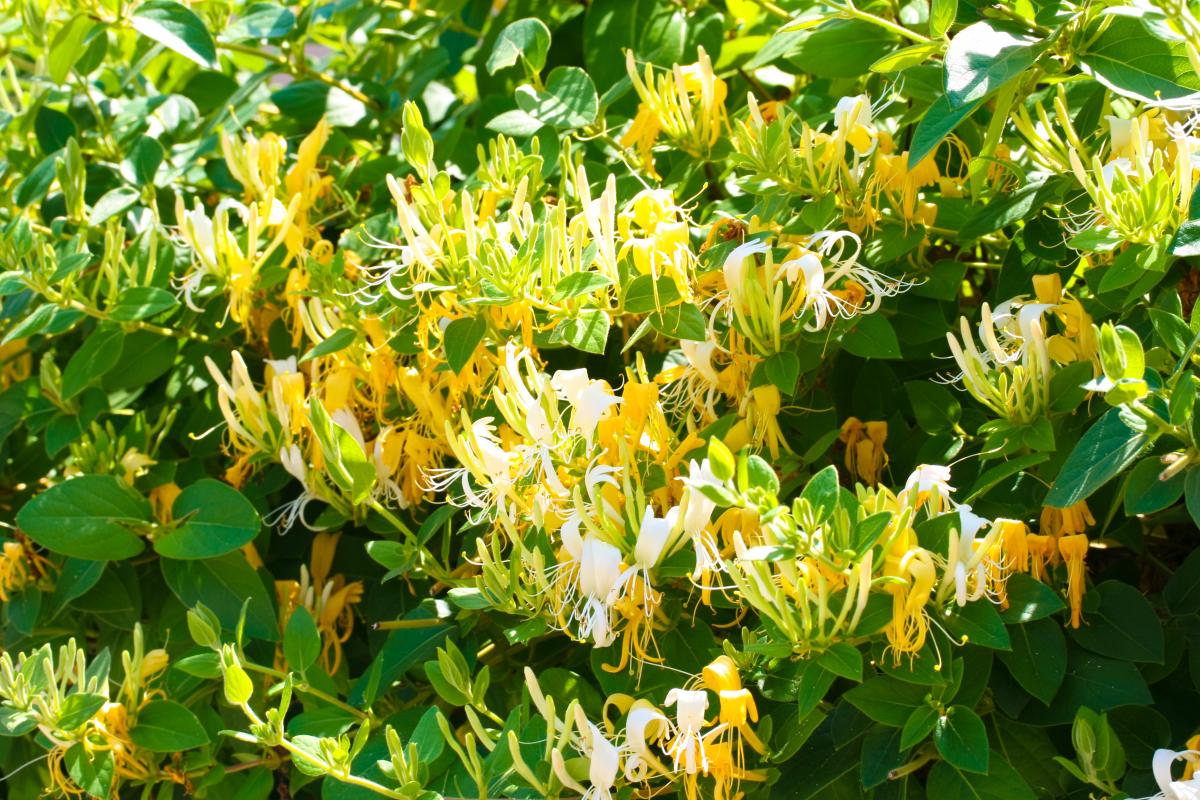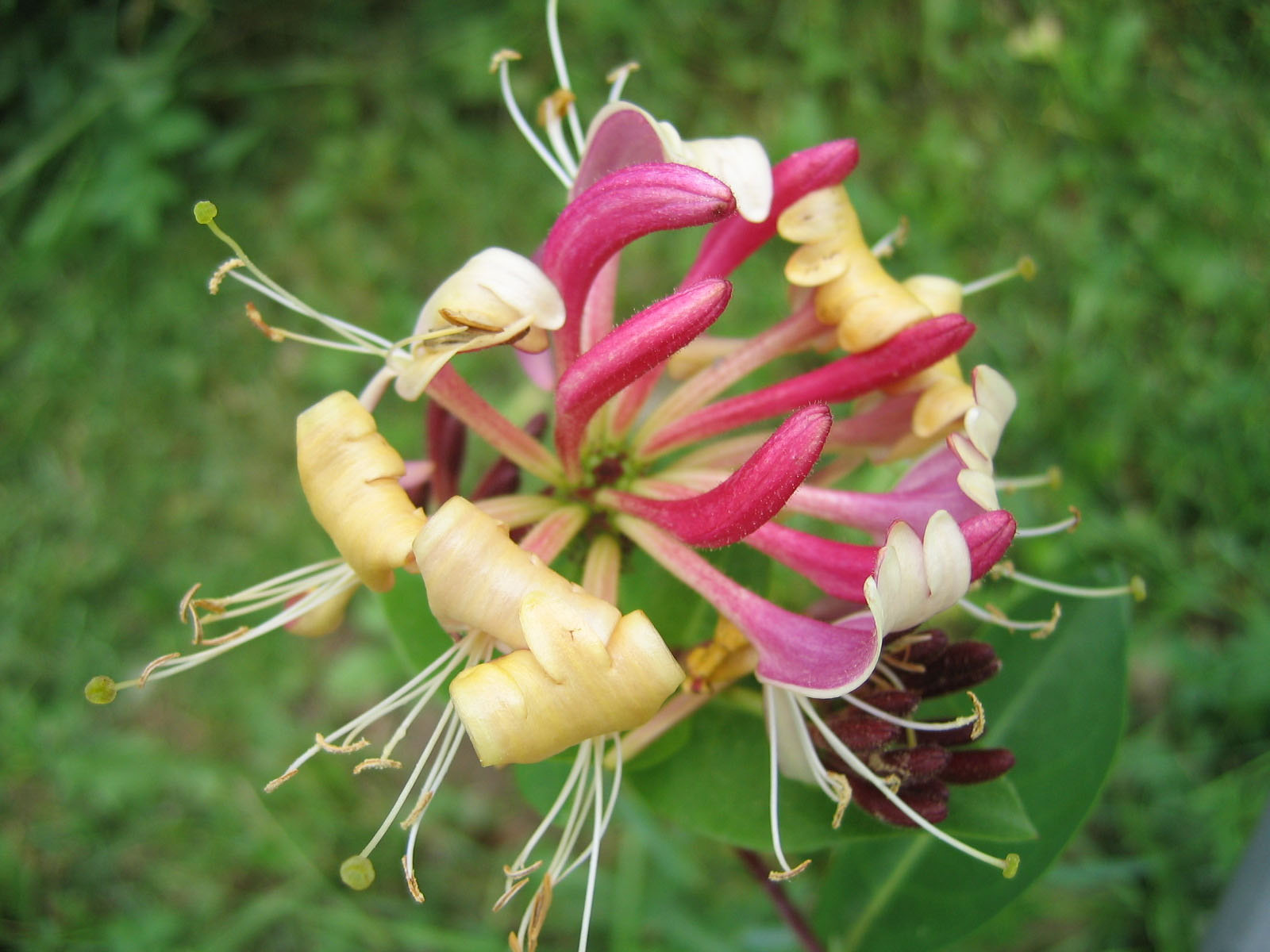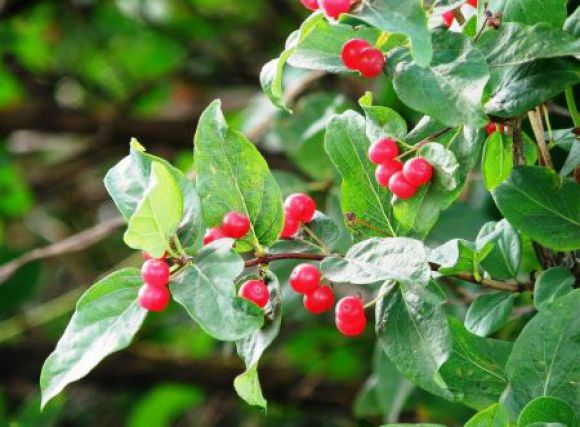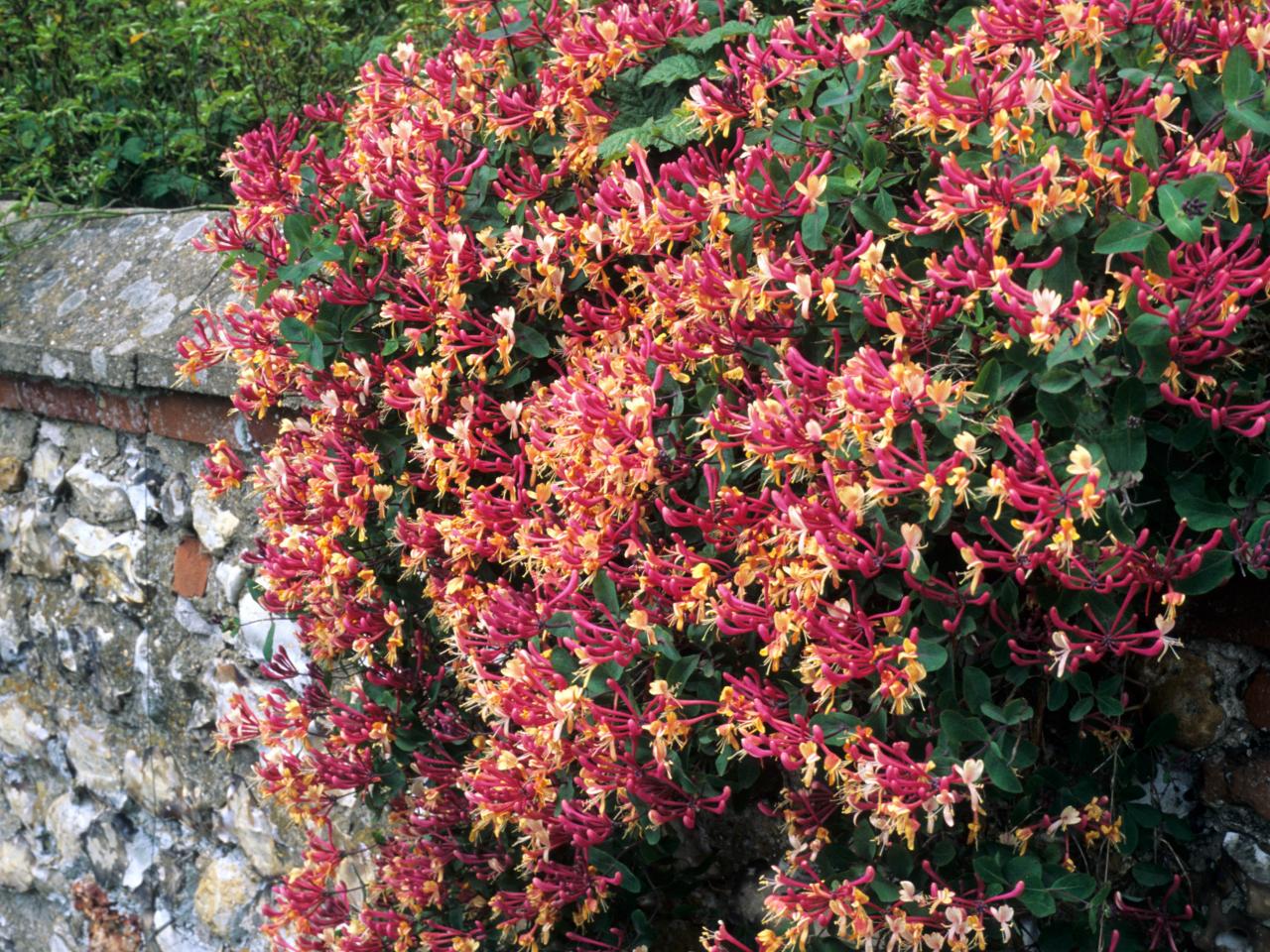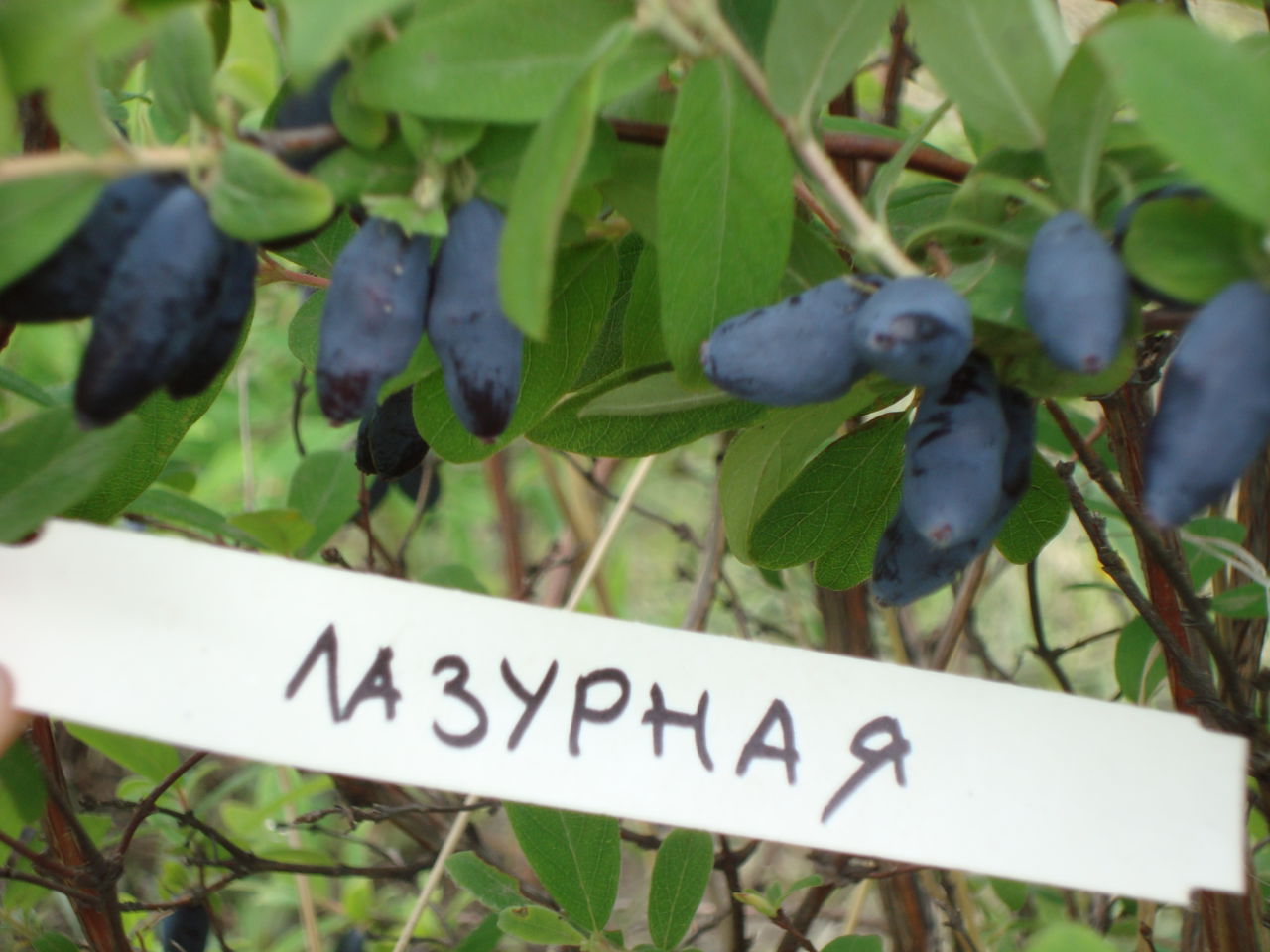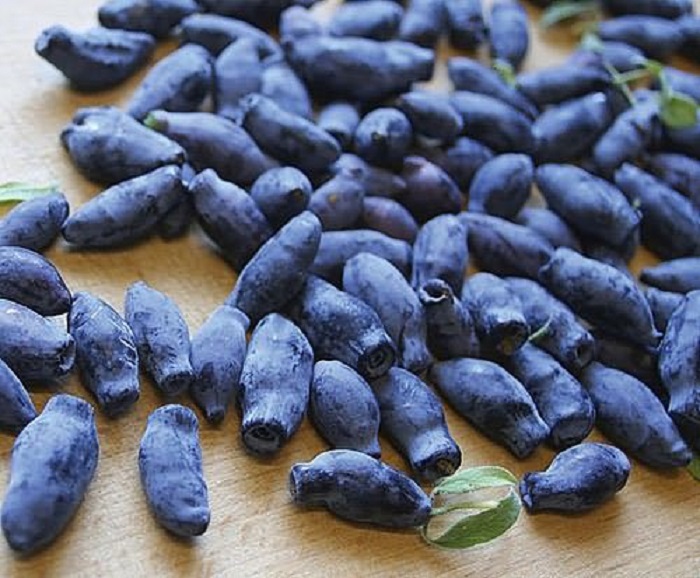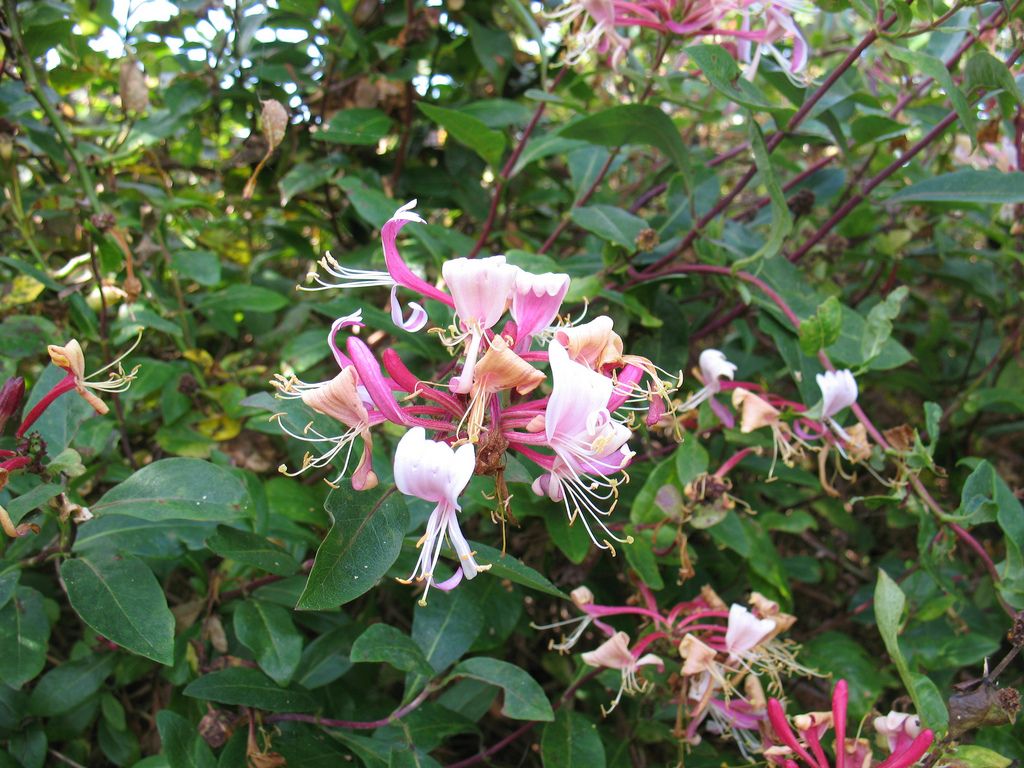Content:
With the help of ornamental plants, owners of private plots emphasize the advantages and hide the disadvantages of the landscape. Thälmann's honeysuckle helps a lot in this. This is an unpretentious ornamental shrub. Plus, it's still very practical. Having picked up the right compositions, you can create a picturesque corner from your summer cottage or home that will delight the eye all year round.
A bit of history
Thälmann's honeysuckle was bred for a long time. They first heard about it in Budapest in the last century. The result of the labor of breeders appeared in 1920, and 6 years later this variety went on sale in Holland. Nowadays, you can buy this amazing plant anywhere in the world. The variety has gained immense popularity in our country.
Description of the variety
Thälmann's honeysuckle is creeping and curls very well. An evergreen liana grows up to 6 meters in height. The leaves are round, up to 10 cm long, the color is uneven. Flowering is unusual in this species. In the inflorescence, 6-7 flowers of a golden-orange color are formed. The plant forms rounded fruits. The growing season for orange honeysuckle lasts from early spring to the very frost.
Thälmann's honeysuckle has a high yield. Up to 1.5 kg of ripe berries are harvested from one bush. But the frost resistance of the plant is average. In harsh climatic conditions, care must be taken to ensure timely and reliable protection of the shrub.
Blooming honeysuckle can be used by landscape designers as a decorative element. For example, it can cover an ugly wall of a building or an unaesthetic structure, a fence. This flower is used for vertical gardening, it only needs to be installed on the supports along which it will trail. This design looks very original and stylish.
There are other types of decorative flowering honeysuckle that have found effective use in landscape design. These include:
- Lonitzer;
- Caprifoil;
- Maygrun (brilliant).
Ideas for creating comfort on your site can be gleaned not only from country magazines, but also from the Internet, where each picture carries a sea of useful information. The pergola entwined with decorative honeysuckle looks great. Creeping bedspread honeysuckle will look no less original. The main thing is to find the right application for it.
Planting honeysuckle
Liana is demanding on soil and lighting. The soil should retain moisture well and be nutritious. The honeysuckle flower is planted in a well-lit place or in a light partial shade. Summer temperature drops for this culture are not terrible, but in winter it does not tolerate frosts. To increase its winter hardiness, it is recommended to make a shelter in the fall.
For those who decide to grow Thälmann's honeysuckle, planting and caring for it are interesting not only in theory, but also in terms of practical experience. Gardeners' reviews suggest that the plant definitely needs powerful supports and strengthening. Honeysuckle brilliant, as summer residents sometimes call it, does not tolerate drought. In order to prevent the soil from drying out, it is advisable to carry out mulching.Landscaping will look even better if you plant ground cover flowers under the vine, which will help retain moisture.
For planting orange honeysuckle, a hole is dug 10 cm larger than the clod of earth on the roots of the acquired seedling. If you plan to arrange a hedge, then a distance of 1.5 meters is left between the bushes. The soil is fertilized with compost, a little sand and wood ash. Using litmus paper, the acidity level of the soil is determined. If the indicator turned out to be less than 6.5-7 pH, then slaked lime should be added there.
As soon as all the preparatory work is carried out, they proceed to the direct planting of the bush. During planting, you must carefully handle the roots and try not to damage them. If an already large seedling is planted, then its lashes are immediately straightened along the supports. Do not use sawdust for mulching. Otherwise, they still need to be removed for the winter, otherwise they can trample and form a focus of fungal diseases.
Features of honeysuckle care
Caring for Thälmann's honeysuckle is easy. The main thing is to water it as the topsoil dries out. If the soil is mulched, then the moisture remains long enough. Weeds are regularly removed, which not only draw useful substances from the soil, but by their appearance do not in any way paint the elegant liana. As the lash grows, the honeysuckle is spread evenly over the entire support, the bush is molded.
During strong winds, the plant can fall to the ground, therefore, it is better to use twine for reliable fixation. Blooming honeysuckle is fed no more than 3 times for the whole season. The first time fertilizers are applied 14 days after planting on the garden bed, and then 21 days later. Complex mineral fertilizers are used for these purposes. In order for the liana to bloom faster, the emphasis should be placed not on nitrogen-containing dressings, but on potassium-phosphorus ones.
If the summer turned out to be rainy and damp, then you need to worry about the decay of the root system. In this case, the mulch is removed, the flower bed is thoroughly ventilated, the soil is very carefully loosened. When carrying out these procedures, damage to the root system should not be allowed, because the description says that for this variety it is located almost on the surface of the earth.
Reproduction of honeysuckle
Vine propagation is quite simple. Around mid-July, several branches are pressed against the ground and sprinkled with earth on top. This place is slightly moistened and mulched. As soon as the branches start to root, they can be separated from the mother plant and planted in a new place.
If necessary, a young plant can be planted in a pot and kept in the apartment until spring. This is done in cases where, when planting in open ground, the seedling does not have time to take root before the onset of stable cold weather.
Site decoration with honeysuckle
Everyone who has their own house is constantly thinking about how to decorate not only it, but also the adjacent territory. A drawing in a magazine can give a good idea, but in practice it is much more difficult to implement. But honeysuckle serves as a win-win option even for the most capricious decorator.
The Telman variety, in comparison with the Kaprifol honeysuckle, exhibits less frost resistance. During the winter, some branches may freeze over, but with the onset of warmth they quickly revive. The shrub is of greatest interest in June. Thälmann's orange decorative honeysuckle blooms for 2 weeks and looks luxurious. By the way, the fruits of this variety are also orange, and they ripen in September. An additional charm is given by the gray-gray below and bright green leaves on top.
Benefits of Thälmann's Honeysuckle
This variety has more advantages than disadvantages. The negative qualities, according to gardeners' reviews, include excessive demands on lighting and soil. If the requirements for these parameters are not met, the decorative qualities deteriorate greatly. With significant deviations from the required conditions, the shrub may die. For this reason, many land owners are forced to abandon the cultivation of Thälmann's honeysuckle.
The advantages of the variety:
- excellent decorative properties;
- abundant long flowering;
- decorative properties of fruits;
- high frost resistance;
- resistance to major phyto-diseases;
- the ability to give the shrub the required shape;
- the ability to bloom even in partial shade.
As you can see, the positive qualities of the plant significantly exceed its disadvantages. Thanks to this, summer residents are ready to close their eyes to the exactingness of Thälmann's honeysuckle and trust her to decorate their site. A feature of this variety is that its flowers and fruits are painted in the same color and have decorative properties.
At different times, the shrub takes on a unique look and pleases the eye not only of its owner, but also of his guests and neighbors. Having planted Thälmann's honeysuckle, you will not have to regret it. The efforts that will be spent on care and planting will pay off handsomely due to the positive emotions that the flowering hedge will give. There will be no more problems with ugly walls or fences.



